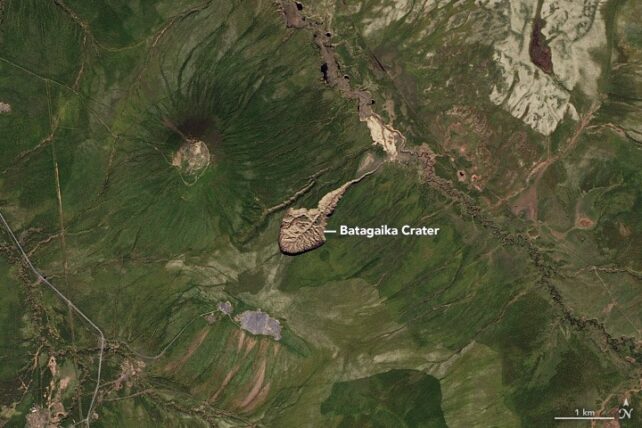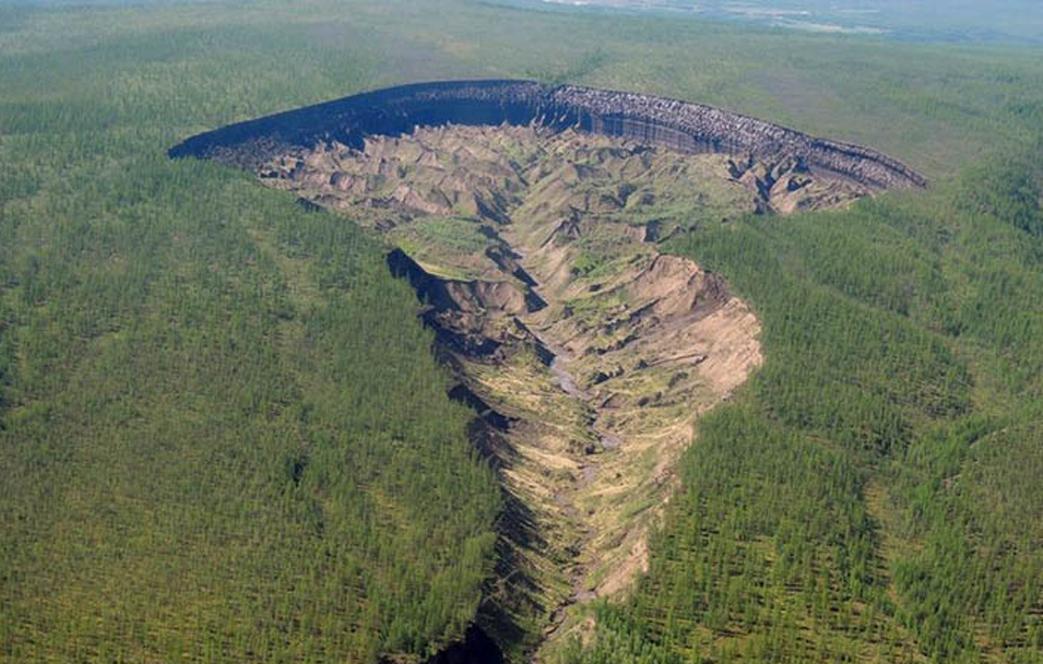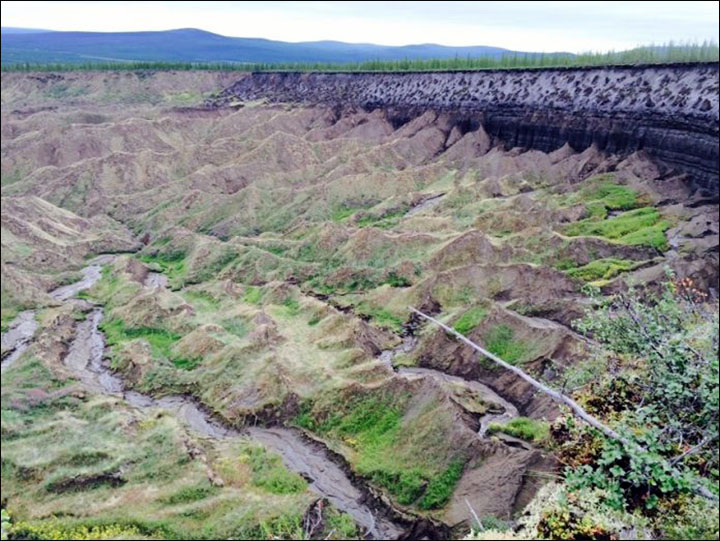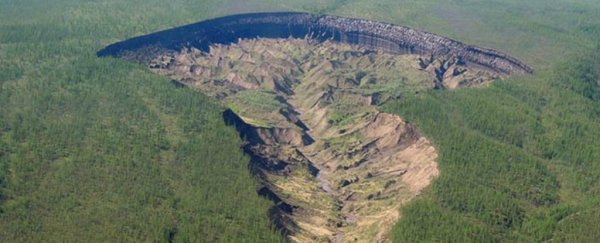For years, as the climate warms, Siberia's permafrost has been showing signs of collapse, with sinkholes appearing out of nowhere and bubbles of gas erupting under people's feet.
The biggest and most well known of those sinkholes is known by the local Yakutian people as the 'doorway to the underworld'.
When we reported on the anomaly back in 2018, it was growing so rapidly that it was uncovering long-buried forests, carcasses, and up to 200,000 years of historical climate records.
Now a drone has been flown down into the crater by Ruptly.tv, showing first-hand the vast scale of the phenomenon. You can check it out below.
https://www.youtube.com/watch?v=mKdlYQ8yIMQ
Known as the Batagaika crater, it's what's officially called a 'megaslump' or 'thermokarst'.
Many of these megaslumps have been appearing across Siberia in recent years, but researchers think Batagaika, due to its size, could be something of an anomaly in the area, located around 660 km (410 miles) north-east of the region's capital city of Yakutsk.

The depression is roughly 1 kilometer (0.62 miles) in length and 100 meters (328 feet) deep – but research presented in 2016 suggests it's growing in size 10 meters per year on average.
The land first started sinking in the '60s after the surrounding forest was cleared and the permafrost began to thaw.
Now the crater continues to grow as the material at the bottom melts and more of the underlying permafrost is exposed to the air.
"The crater will likely eat through the entire hillslope before it slows down," geographer Mary Edwards from the University of Southampton told NASA's Earth Observatory in 2016.
"Every year as soon as temperatures go above freezing, it's going to start happening again. Once you've exposed something like this, it's very hard to stop it."

The instability of the region isn't just dangerous for locals. There are also concerns that as the hole gets deeper and larger, it will expose carbon stores that have been locked away for thousands of years.
Not only that, but ancient viruses have recently been revived after being frozen for eons in Siberia.

But it's not all terrible news. A study published in February 2017 in the journal Quaternary Research has shown that the layers exposed by the crater could now reveal 200,000 years of climate data.
That's in addition to the preserved remains of long-buried forests, ancient pollen samples, and even the frozen remains of a musk ox, mammoth, and a 4,400-year-old horse.
Hopefully being able to understand more about the climate change of our planet's past may help us better prepare for what's yet to come.
